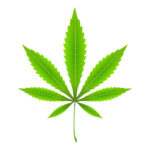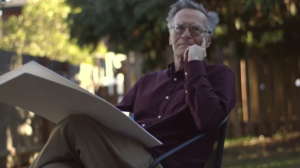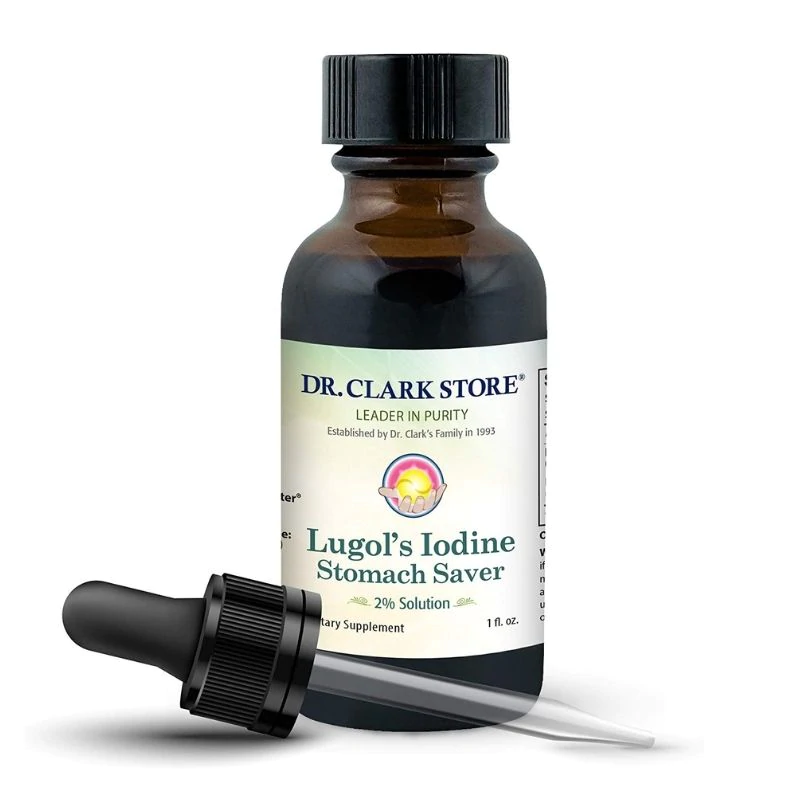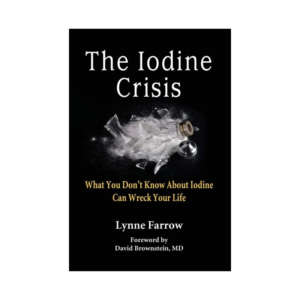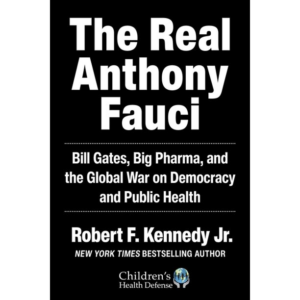Follow this link for the full discussion on Supplements.
Below are some written quotes, references, interview answers from Peat about his thoughts with iodine.
All discussions above Peat’s are based on my own opinions and interpretations.
Using iodine, and the quantities and type of iodine to be ingested that is recommended by some proponents of high dose iodine is a controversial topic.
** As a note, I have cured much in myself (including from a huge amount of arthritis pain that is so minimized now it hardly affects my life) that I have found in discussion on the Iodine Forum by INSTEAD following what I think are Peat’s ideas of food (and especially with liver), minimal supplements, thyroid, and progesterone advice for 35 years.
I think using high doses of iodine should be done with great caution.
I don’t at all know if any high dose iodine ingestion damage that might be done can be reversed.
Frankly, I suggest considering it ONLY after diligently and purely, for at least 3-6 months, following the more common place, and successfully used, decades-long recommendations by Peat to see how it goes.
And even then give pause.
Maybe we weren’t really faithfully following Peat’s suggestions after all. We all get into PUFA snacks, holiday foods etc. We say “I hate liver, eeeewhe” and don’t eat it and miss out on all the B vitamins that can actually, safely, be utilized by our bodies with this simple gift from a cow…and then we suffer.
Or our food choices, organic or not, are still significantly poisoning us with excess pesticide or glyphosate residue and our symptoms would heal if we would only choose cleaner food.
Or our environment is soaked with nearby 5G and Smart tech wifi radiation or molds.
You get the picture.
I think Peat’s ideas are about using a synergy of particular foods and using SOME and NOT using very particular supplements. The plan is about doing these things, not doing other things.
We will not have success with a chosen healing method if we instead of faithfully following the course of action that has been known to work for a great many, instead gets us impatient and creative too soon and thinking about how we can change the ideas around to our own comfort.
Then we think the experiment has failed when instead we have failed to follow the ideas correctly for enough time.
Be careful. Sometimes our desires for a simple, one-thing magic bullet lead us to more damage.
In my notes and listening to and reading his interviews with iodine questions, Peat believes we should supplement only about 150 mcg (that’s micro rather than milli) per day and much of that would better be ingested through regular consumption of raw milk.
Peat, in this recent interview, explains more—really he says no to anything extra on iodine.
From what I understand, Peat has suggested Dr. Abraham, the primary MD specialist researching iodine use, who was in school in the similar time he was, is interpreting the data on iodine incorrectly.
Peat has also suggested the tests done now to test for low or high levels of iodine are inaccurate.
Here is some more info from Peat about using high dose iodine.
and here
and here.
Others believe differently and have described anecdotal healings of all kinds of maladies using it in greater quantities and of a specific type.
I suggest reading this book for more information about it:
Lynne Farrow’s support site mentioned in her book, does offer a list of iodine-specialist licensed medical providers.
NOTE: As mentioned on the medical practitioners list, use caution when taking advice from some medical practitioners.
Though they might have educated themselves in the “common market” more specifically on some specialty, like cannabis use or iodine use, remember—REMEMBER, physicians, particularly those trained over the last 50 years or so, have primarily been (very expensively trained) trained in becoming pharmaceutical reps.
Their science lessons have been skewed. Their biology and physiology lessons skewed. The pharmacopeia they have been learning and memorizing has been generally stripped of much side effect information. They are NOT trained to be healers. They are NOT trained for health.
They are only trained on magic bullets, and bullets most of them are in the true sense of the word, called pharmaceutical prescription drugs.
They get maybe half a day about nutrition, and that’s nutrition according to the Big Pharma/Big Food narrative, not the real, not the correct, science, biology, chemistry, physiology nutrition.
Some physicians are now openly admitting this, like Dr. Joe Mercola, MD. and Dr. Sherri Tenpenny, OD..
Even trying to do research online using PubMed, like ourselves, or many of the medical databases, which is also all they have available to them, the results now are algorithmically skewed. They don’t have all the information and they were not trained to critically think through these things.
They have been trained to listen to authority. The authority is Big Pharma. Big Pharma pays off and owns (called the agencies being “captured”) the CDC, FDA, even the WHO and so much more.
If you’d like to know more about this phenomenon, I suggest you read something off-line, that’s sold more than a million copies already but you won’t hear about it on the news.
The book contains over 2500 highly vetted, court-room-ready, litigation attorney level documentations for every claim in it.
This is the book written by Robert F. Kennedy, Jr., a powerful, highly esteemed corporate environmental litigation attorney who protected our rivers for years. He is now dedicated to protecting our children and the rest of us from the corporate corruption and fraud that has overtaken our entire medical, insurance, and educational systems.
His non-profit is the Children’s Health Defense which deserves our support.
And looking around this iodine forum site of patients-to-patients discussions one reads that people are in a lot of ill health.
We don’t know what else they are doing about getting well.
We don’t know if they have access to clean water, clean food, enough sleep.
We don’t know if they are taking massive amounts of “other” supplements and shots doing who knows what to them because the TV told them too.
The members of this iodine forum though, are passionate about using iodine in specific and particular formulations.
Also, be aware that those using high dose iodine recommend ALSO ingesting additional salt and other co-supplements like high dose Vit. C and magnesium and melatonin (all except the salt really dangerous to ingest as supplements, see Dangerous Items list).
These co-nutrients would better be ingested from food per Peat suggestions including his recommendation that even up to 4000 mg of additional Vit. C can be ingested from FOOD such as even meat and milk if all grains are also eliminated from the diet.
Some have used nascent iodine, and Lugols, if found tested clean, and you can find it here, topically only for cuts, for eczema (it might burn), some have painted it (and Lugols version) TOPICALLY onto breast cysts and tumors, or used it to disinfect water while hiking or for emergency reserves for water disinfection.
Some have used nascent iodine in unknown quantity to protect their thyroids from nuclear radiation (I don’t know much about that).
When I asked Dr. Peat for more info about fibrocystic breast problems and radiation, here was his response:
“Guy Abraham of Optimox seems to have been the source of the idea of general radiation protection by iodine; his website was full of crazy cult ideas about radiation, besides advocating the use of huge doses of iodine. During fall-out from nuclear testing or a reactor leak, saturating the thyroid gland with ordinary iodine kept it from absorbing the radioactive iodine from contaminated food, so potassium iodide pills were protective during the weeks immediately after the exposure to the short half-life radioiodine.
A moderate iodine supplement, such as from sea food, does help fibrocystic breasts.” – Ray Peat.
You can hear this Peat vitamin C recommendation (and other relevant information) in a Covid interview Peat gave in March, 2020.
Here are the Peat references on iodine:
The Myth of Iodine Deficiency – Interview with Dr. Ray Peat
Is iodine supplementation safe and, if not, is there a safe amount of supplemental iodine?
Dr. Peat: “A dosage of 150 mcg (micrograms, not milligrams, e.g. ug not mg) is a safe amount of iodine. My current newsletter has some references describing the effect of even moderate iodine excess (even below a milligram per day) on the thyroid. An iodine deficiency can cause hypothyroidism (rare now), but so can an excess. Most goiters now are from estrogen-like effects, but they used to be from iodine deficiency. Chronic excess iodine tends to cause thyroiditis, regardless of the gland’s size.
The amounts used by Abraham and Flechas are much larger than this – very toxic doses, enough to cause severe thyroid problems.”
Is the Iodine Test Kit (from Dr. Abraham) valid and does it reveal thyroid deficiency?
“Guy Abraham and his followers are iodine cultists; some of them claim that an iodine deficiency can be shown by the quick disappearance of a spot of iodine painted on the skin. Iodine is converted to colorless iodide by reductants, including vitamin C, glutathione, and thiosulphate.”
“The skin test of iodine deficiency is just completely brainless. Iodine is converted to colorless iodide by reductants, including vitamin C, glutathione, and thiosulphate. My current newsletter has some references describing the effect of even moderate iodine excess (even below a milligram per day) on the thyroid. An iodine deficiency can cause hypothyroidism, but so can an excess.”
“The Iodine Test Kit is just a way to sell more of (G. Abraham’s) iodine overdose pills. Those, malic acid, and gold are products of Optimox/Abraham. The test is completely irrational. It implies that the body should be saturated with iodine.”
Is there a rational test for iodine overdose/deficiency?
Dr. Peat: “It could be done, but it isn’t considered to have any health significance, since goiter is the only generally recognized effect of a deficiency.”“Hypothyroidism is strongly associated with breast disease, including cancer. John Myers probably started the talk about iodine receptors, which has led people to confuse oxidative damage with a physiological effect.”
“As a general principle, it’s good to figure that everything they say about iodine is false. Hypothyroid people get cancer, but iodine deficiency is an unusual cause of hypothyroidism, except in a few places, like the mountains of Mexico and China, and the Andes.”
“John Myers seems to be the one that started the idea of an iodine receptor, thinking about the ability of sulfhydryl compounds (such as cysteine or glutathione) to reduce molecular iodine to iodide, but there’s really no particular meaning to the idea of an iodine receptor. John Myers wasn’t quite as flaky as the current crop of iodine crazies, but he didn’t have any clear ideas, either.”
“High iodine intake can suppress TSH, and since high TSH is pro-inflammatory, the iodine can have some protective anti-inflammatory actions, but in the long run, the thyroid suppression becomes a problem.”
“Iodine toxicity References
Re the urinary iodine test, it’s one of the big cults going around lately, telling people they should be saturated with iodine. Iodine reacts easily with toxic PUFA (omega-3 and -6 oils) to make antithyroid molecules.”
Science 1985 Oct 18;230(4723):325-7
Induction of autoimmune thyroiditis in chickens by dietary iodine.
Bagchi N, Brown TR, Urdanivia E, Sundick RS.
Clinical studies have suggested that excess dietary iodine promotes autoimmune thyroiditis; however, the lack of a suitable animal model has hampered investigation of the phenomenon. In this study, different amounts of potassium iodide were added to the diets of chicken strains known to be genetically susceptible to autoimmune thyroiditis. Administration of iodine during the first 10 weeks of life increased the incidence of the disease, as determined by histology and the measurement of autoantibodies to triiodothyronine, thyroxine, and thyroglobulin. Further support for the relation between iodine and
autoimmune thyroiditis was provided by an experiment in which iodine-deficient regimens decreased the incidence of thyroid autoantibodies in a highly susceptible strain. These results suggest that excessive consumption of iodine in the United States may be responsible for the increased incidence of autoimmune thyroiditis.
Endocrinology. 2008 Jan;149(1):424-33. Epub 2007 Sep 20.
Oxidative stress in the thyroid gland: from harmlessness to hazard depending on the iodine content.
Poncin S, Gérard AC, Boucquey M, Senou M, Calderon PB, Knoops B, Lengelé B, Many
MC, Colin IM.
Unité de Morphologie Expérimentale (MOEX), Université catholique de Louvain,
UCL-5251, B-1200 Brussels, Belgium.
In basal conditions, thyroid epithelial cells produce moderate amounts of reactive oxygen species (ROS) that are physiologically required for thyroid hormone synthesis. They are not necessarily toxic because they are continuously detoxified either in the process of hormone synthesis or by endogenous antioxidant systems. Using a rat model of goiter formation and iodine-induced involution, we found that compared with control thyroids, the oxidative stress, assessed by the detection of 4-hydroxynonenal, was strongly enhanced both in hyperplastic and involuting glands. The level of antioxidant defenses (glutathione peroxidases and peroxiredoxins) was also up-regulated in both groups, although somewhat less in the latter. Of note, increased oxidative stress came along with an inflammatory reaction, but only in involuting glands, suggesting that although antioxidant systems can adequately buffer a heavy load of ROS in goiter, it is not necessarily the case in involuting glands. The effects of 15-deoxy-Delta(12,14)-prostaglandin J2 (15dPGJ2), an endogenous ligand of peroxisome proliferated-activated receptor gamma (PPARgamma) with antiinflammatory properties, were then investigated in involuting glands. This drug strongly reduced both 4-hydroxynonenal staining and the inflammatory reaction, indicating that it can block iodine-induced cytotoxicity. When experiments were carried out with the PPARgamma antagonist, bisphenol A diglycidyl ether, 15dPGJ2-induced effects remained unchanged, suggesting that these effects were not mediated by PPARgamma. In conclusion, thyroid epithelial cells are well adapted to endogenously produced ROS in basal and goitrous conditions. In iodine-induced goiter involution, the increased oxidative stress is accompanied by inflammation that can be blocked by 15dPGJ2 through PPARgamma-independent protective effects.
Hokkaido Igaku Zasshi 1994 May;69(3):614-26
[Screening for thyroid dysfunction in adults residing in Hokkaido Japan: in
relation to urinary iodide concentration and thyroid autoantibodies]
[Article in Japanese]
Konno N, Iizuka N, Kawasaki K, Taguchi H, Miura K, Taguchi S, Murakami S, Hagiwara K, Noda Y, Ukawa S.
Department of Internal Medicine, Hokkaido Central Hospital for Social Health Insurance, Sapporo, Japan.
The prevalence of thyroid dysfunction and its relation to thyroid autoantibodies (TAA) and urinary iodide concentration (UI) was studied in apparently healthy adults in Sapporo (n = 4110) (Sapporo group), and in five coastal areas of Hokkaido (n = 1061) (coastal group) which produce iodine-rich seaweed (kelp). The frequency of above normal urinary iodine (high UI) in the morning urinary samples of coastal group was 10.8%, significantly higher than that of Sapporo group (6.4%) (p < 0.001). Frequency of positive TAA in both groups were similar. In Sapporo group TAA was positive in 6.4% of males and 13.8% of females with an age-related increase. The overall prevalence of hyperthyroidism (TSH < 0.15 mU/L) in coastal group (0.6%) was similar to that in Sapporo group (1.1%), while that of hypothyroidism (TSH > 5.0 mU/L) in coastal group (3.8%) was significantly higher than that in Sapporo group (1.3%) (P < 0.001). The frequency of high UI correlated significantly with that of hypothyroidism with negative TAA (r = 0.829, P < 0.05), but not with positive TAA, or with that of hyperthyroidism. Hypothyroidism was more prevalent in TAA negative subjects with high UI than with normal UI. Moreover, serum TSH and thyroglobulin levels were higher and free T4 level was lower in former than in latter group. These results indicate that 1) the prevalence of TAA negative hypothyroidism in iodine sufficient areas may be associated with the amount of iodine ingested, 2) this hypothyroidism is more prevalent and marked in subjects consuming further excess amounts of iodine, and 3) excessive intake of iodine should be considered an etiology of hypothyroidism in addition to chronic thyroiditis in these areas.
Clin Endocrinol (Oxf) 1989 Oct;31(4):453-65
Thyroid autoimmunity in endemic goitre caused by excessive iodine intake.
Boyages SC, Bloot AM, Maberly GF, Eastman CJ, Li M, Qian QD, Liu DR, van der Gaag RD, Drexhage HA.
Department of Medicine, Westmead Hospital, Sydney, Australia.
The pathophysiology of endemic goitre caused by excessive iodine intake is not well defined. By interacting with the immune system, iodine excess may trigger the development of autoimmune thyroid disease such as lymphocytic Hashimoto’s thyroiditis (LT). In an attempt to examine this further, we compared the presence of thyroid autoantibodies in 29 goitrous children, from an iodine excess area, and in 26 healthy children, from an iodine sufficient area, of north central China. Serum was tested for antimicrosomal (MAb), anti-thyroglobulin (TgAb), second colloid antigen antibodies (CA2-Ab) and TSH
binding inhibitory immunoglobulins (TBII). Affinity chromatographically purified IgG was tested for thyroid growth-stimulating activity (TGI) by two different methods: a sensitive cytochemical bioassay (CBA) using guinea-pig thyroid explants and a mitotic arrest assay (MAA) employing a continuous rat thyroid cell line (FRTL-5). We found no increased prevalence of LT in patients with endemic iodine goitre. The levels of MAb, TgAb and CA2-Ab did not differ significantly between the two groups of children. Further, TBII were not present in either group. Thyroid growth-stimulating immunoglobulins (TGI) were the major autoantibodies found in children with goitres caused by iodine excess. In the CBA, 12 of 20 (60%) goitrous children and 0 of 12 (0% P less than 0.05) healthy children were positive for TGI. Similar results were found in the MAA, and a good correlation between results of the CBA and MAA was found (P = 0.003). Maximal TGI activity in dose-response CBA showed a good relation with clinical goitre size (r = 0.63; P less than 0.05) indicating a possible pathophysiological role for these antibodies. We conclude that endemic iodine goitre is not associated with Hashimoto’s lymphocytic thyroiditis. Nevertheless,
autoimmune growth factors such as TGI may play a primary role in the pathogenesis of thyroid growth in this condition.
Endocrinol Metab Clin North Am 1987 Jun;16(2):327-42
Environmental factors affecting autoimmune thyroid disease.
Safran M, Paul TL, Roti E, Braverman LE.
Department of Medicine, University of Massachusetts Medical Center, Worcester.
A number of environmental factors affect the incidence and progression of autoimmune thyroid disease. Exposure to excess iodine, certain drugs, infectious agents and pollutants, and stress have all been implicated.
Acta Endocrinol (Copenh) 1978 Aug;88(4):703-12
A case of Hashimoto’s thyroiditis with thyroid immunological abnormality manifested after habitual ingestion of seaweed.
Okamura K, Inoue K, Omae T.
An interesting case of iodide induced goitre with immunological abnormalities is described. The patient who was sensitive to synthetic penicillin had previously been treated for exudative pleuritis, congestive heart failure and acute renal failure. Following recovery, he began to ingest large amounts of seaweed after which he developed goitrous hypothyroidism. It was of interest that the serum level of gamma-globulin increased, and subsequently the antithyroid microsomal antibody became strongly positive, suggesting that thyroidal autoimmune processes had been precipitated. Biopsy of the thyroid gland revealed chronic thyroiditis, with evidence suggesting extreme stimulation by TSH. Hight thyroidal uptake of 131I, positive perchlorate discharge test and biochemical analysis of the thyroidal soluble protein showed severe impairment of hormone synthesis following continuous accumulation of excess iodide. While there is evidence suggesting that increased iodide may be an important factor in the initiation of Hashimoto’s thyroiditis, this may result from the marked increased sensitivity of Hashimoto’s gland to the effects of iodine. Thus an occult lesion could be unmasked in this manner. The mechanism by which iodide mediates this effect is not clear.
Presse Med 2002 Oct 26;31(35):1670-5
[Hypothyroidism related to excess iodine]
[Article in French]
Wemeau JL.
Clinique endocrinologique Marc Linquette CHRU de Lille USNA, 59037 Lille. jl-wemeau@chru-lille.fr
WOLFF-CHAIKOFF’S EFFECT: The thyroid gland has a capacity to reduce thyroid hormone production in the presence of excess iodine by reducing the organification of the iodine. This Wolff-Chaikoff effect is observed after 48 hours and protects the organism from excessive synthesis of the thyroid hormones. This effect is usually temporary and within a few days thyroid hormone synthesis returns to normal through the so-called ‘escape’ phenomenon. However in a few normal individuals and in some susceptible patients, the escape does not occur. THE CONTEXT OF OCCURRENCE: Iodine-induced hypothyroidism is observed in fetuses, newborn, adults and in the elderly. It is observed in individuals without underlying overt thyroid disorder, and especially in patients with autoimmune thyroiditis or those previously treated for thyroid diseases (Graves’ disease, subacute or pospartum thyroiditis, iatrogenic thyroid dysfunction…). FROM A CLINICAL AND PROGRESSIVE POINT OF VIEW: The hormone deficiency is of obvious clinical expression, or sometimes discreet and revealed by hormone exploration. It is usually temporary, regressing with a few days or weeks after iodine withdrawal. Nevertheless, some patients require transient hormone replacement therapy.
Thyroid 2001 May;11(5):427-36
Iodine and thyroid autoimmune disease in animal models.
Ruwhof C, Drexhage HA.
Department of Immunology, Erasmus University, Rotterdam.
Thyroid autoimmune diseases are complex, polygenic afflictions the penetrance of which is heavily dependent on various environmental influences. In their pathogenesis, an afferent stage (enhanced autoantigen presentation), a central stage (excessive expansion and maturation of autoreactive T and B cells), and an efferent stage (effects of autoreactive T cells and B cells on their targets) can be discerned. At each stage, a plethora of inborn, endogenous or exogenous factors is able to elicit the abnormalities characteristic of that stage, thus opening the gateway to thyroid autoimmunity. Iodine is an important exogenous modulating factor of the process. In general, iodine deficiency attenuates, while iodine excess accelerates autoimmune thyroiditis in autoimmune prone individuals. In nonautoimmune prone individuals, the effects of iodine are different. Here iodine deficiency precipitates a mild (physiological) form of thyroid autoimmune reactivity. Iodine excess stimulates thymus development. Iodine probably exerts these effects via interference in the various stages of the autoimmune process. In the afferent and efferent stage, iodine-induced alterations in thyrocyte metabolism and even necrosis most likely play a role.
By contrast, in the central phase, iodine has direct effects on thymus development, the development and function of various immune cells (T cells, B cells macrophages and dendritic cells) and the antigenicity of thyroglobulin.
Clin Immunol Immunopathol 1996 Dec;81(3):287-92
Iodine-induced autoimmune thyroiditis in NOD-H-2h4 mice.
Rasooly L, Burek CL, Rose NR.
Department of Molecular Microbiology and Immunology, School of Hygiene and Public Health, Johns Hopkins University, Baltimore, Maryland 21205, USA.
Excess iodine ingestion has been implicated in induction and exacerbation of autoimmune thyroiditis in human populations and animal models. We studied the time course and sex-related differences in iodine-induced autoimmune thyroiditis in NOD-H-2h4 mice. This strain, derived from a cross of NOD with B10.A(4R), spontaneously develops autoimmune thyroiditis but not diabetes. NOD-H-2h4 mice were given either plain water or water with 0.05% iodine for 8 weeks. Approximately 54% of female and 70% of male iodine-treated mice developed thyroid lesions, whereas only 1 of 20 control animals had thyroiditis at this
time. Levels of serum thyroxin (T4) were similar in the treatment and control groups. Thyroglobulin-specific antibodies were present in the iodine-treated group after 8 weeks of treatment but antibodies to thyroid peroxidase were not apparent in the serum of any of the animals. Levels of thyroglobulin antibodies
increased throughout the 8-week iodine ingestion period; however, no correlation was seen between the levels of total thyroglobulin antibodies and the degree of thyroid infiltration at the time of autopsy. The thyroglobulin antibodies consisted primarily of IgG2a, IgG2b, and IgM antibodies with no detectable IgA,
IgG1, or IgG3 thyroglobulin-specific antibodies. The presence of IgG2b thyroglobulin-specific antibodies correlated well with the presence of thyroid lesions.
Verh Dtsch Ges Pathol 1996;80:297-301
[Spontaneous Hashimoto-like thyroiditis in cats]
[Article in German]
Schumm-Draeger PM, Langer F, Caspar G, Rippegather K, Herrmann G, Fortmeyer HP, Usadel KH, Hubner K.
Medizinische Klinik I, Johann Wolfgang Goethe-Universitat, Frankfurt/M.
A breeding line of domestic cats spontaneously developing symptoms of hypothyroidism between the 40th and 60th day of life (fur changes, loss of appetite, growth retardation), elevated levels of antibodies against microsomal structures and thyroglobulin, and lymphocytic thyroid infiltration has been recently established at our facility. Aim of our studies was to examine the effect of high iodine ingestion or prophylactic thyroid hormone therapy on functional and morphological characteristics of this Hashimoto-like thyroiditis in cat. From birth to day 80 of life cats were treated with iodine (n = 9; 0.1 mg/l) or thyroxin (n = 13; 2.0 micrograms/ kg/d) respectively. Untreated animals served as controls (n = 12). Cat-serum was tested for thyroid function (TT3, TT4). After 8 weeks the thyroid tissue was submitted to routine histological processing (H&E) and the inflammatory activity was scored. Additionally immunohistological staining was performed for MIB-1, IgG, IgM and MHCII expression. Both untreated hypothyroid (UHC) as well as iodine-treated (IC) cats revealed a significantly higher degree of thyroid inflammation and higher levels of IgM as the thyroxin-substituted animals (TC). Epithelial proliferation decreased significantly in the IC and TC groups as compared to the untreated controls. No significant differences regarding IgG production and HLAII expression were detectable. Early thyroid hormone therapy significantly
decreases both incidence and activity of autoimmune thyroiditis in cats as measured by inflammatory infiltration, IgM production and epithelial proliferation. Animals with excess iodide intake, however, show an aggravation of the autoimmune inflammatory activity.
Autoimmunity 1995;20(3):201-6
Excess iodine induces the expression of thyroid solid cell nests in lymphocytic thyroiditis-prone BB/W rats.
Zhu YP, Bilous M, Boyages SC.
Department of Clinical Endocrinology, Westmead Hospital, Sydney, Australia. Previous epidemiological studies have suggested that lymphocytic thyroiditis and/or an increased iodine intake may be risk factors for the development of thyroid cancer. We previously reported that excess iodine accelerated the development of thyroid lymphocytic infiltration (LI) in the autoimmune BB/W rat model. We also found that excess iodine increased thyroid cell proliferation in a disordered manner. The present study was designed to further explore these observations and to address the question as to whether excess iodine under certain conditions predisposes the thyroid gland to neoplasia. To test this hypothesis, the lymphocytic thyroiditis-prone BB/W rat was exposed to excess iodine in drinking water. Ten BB/W rats at 4 weeks of age were given iodine water (NaI 0.05%) for 10 weeks, whilst another 10 BB/W rats were given tap water and served as controls. Eighteen normal Wistar rats were also divided into excess iodine and control groups, served as a comparison to the BB/W rats. We found that an excess iodine intake accelerated the development of LI in the BB/W rat. Severe LI was usually accompanied by prominent thyroid cell proliferation, evident as numerous microfollicles and cell masses, not forming normal thyroid follicles. Numerous lymphocytes and plasma cells often encroached on these areas of increased cellular proliferation. The surprising feature, and a possible indicator of activated thyroid cell proliferation, was the high incidence of thyroid solid cell nest-like lesions (SCN) in the iodine treated BB/W rats.(ABSTRACT TRUNCATED AT 250 WORDS)
** As a note, I have cured much in myself (including from a huge amount of arthritis pain that is so minimized now it hardly affects my life) that I have found in discussion on the Iodine Forum by INSTEAD following what I think are Peat’s ideas of food (and especially with liver), minimal supplements, thyroid, and progesterone advice for 35 years.
